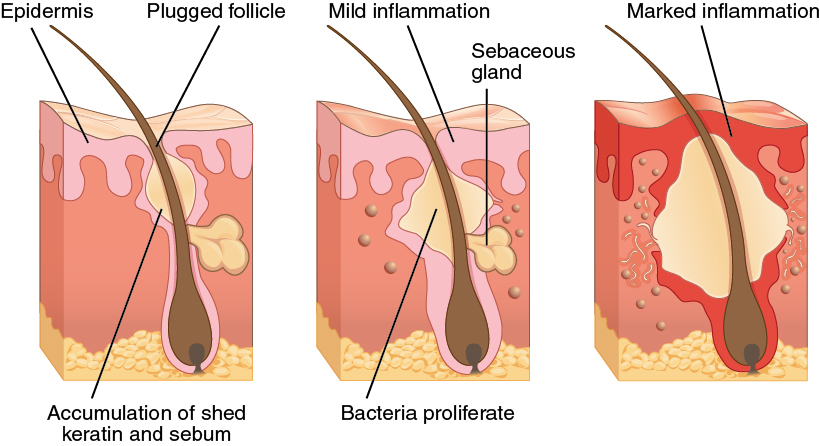| << Chapter < Page | Chapter >> Page > |

Because the skin is the part of our bodies that meets the world most directly, it is especially vulnerable to injury. Injuries include burns and wounds, as well as scars and calluses. The formation of calluses is caused by an accumulation of dead skin cells that harden and thicken over an area of the foot. This callus formation is the body's defense mechanism to protect the foot against excessive pressure and friction. Calluses are normally found on the ball-of-the-foot, the heel, and/or the inside of the big toe. (http://foot.com/site/foot-conditions/calluses) Other injuries can be caused by sharp objects, heat, or excessive pressure or friction to the skin.
Blisters are small pockets of liquid that form on the outer layer of the skin after the skin becomes damaged (usually caused by forceful rubbing or burning). Blisters prevent the area from becoming further damaged by protecting the skin underneath and giving it adequate time to heal. (http://www.medicalnewstoday.com/articles/264783.php)When the skin is wounded and there is a break in the body’s tissues, the body produces more of a protein called collagen as part of the healing process. Collagen builds up where the tissue has been damaged, helping to heal and strengthen the wound. (http://www.nhs.uk/conditions/Scars/Pages/ Introduction.aspx) Also contributing to the appearance of scars is the absence of sweat glands, sebaceous glands and hair follicles.
Skin injuries set off a healing process that occurs in several overlapping stages. The first step to repairing damaged skin is the formation of a blood clot that helps stop the flow of blood and scabs over with time. Many different types of cells are involved in wound repair, especially if the surface area that needs repair is extensive. Before the basal stem cells of the stratum basale can recreate the epidermis, fibroblasts mobilize and divide rapidly to repair the damaged tissue by collagen deposition, forming granulation tissue. Blood capillaries follow the fibroblasts and help increase blood circulation and oxygen supply to the area. Immune cells, such as macrophages, roam the area and engulf any foreign matter to reduce the chance of infection.
A burn results when the skin is damaged by intense heat, radiation, electricity, or chemicals. The damage results in the death of skin cells, which can lead to a massive loss of fluid. This loss of fluid is the primary medical concern immediately following a burn injury. Dehydration, electrolyte imbalance, and renal and circulatory failure follow dehydration, all of which can be fatal. Burn patients are treated with intravenous fluids to offset dehydration, as well as intravenous nutrients that enable the body to repair tissues and replace lost proteins. A patient recovering from extensive burns will have a higher metabolic rate and need to ingest more nutrients to meet the demands of a healing body. Another serious threat to the lives of burn patients is infection. Burned skin is extremely susceptible to bacteria and other pathogens, due to the loss of protection by intact layers of skin.

Notification Switch
Would you like to follow the 'Integumentary system' conversation and receive update notifications?